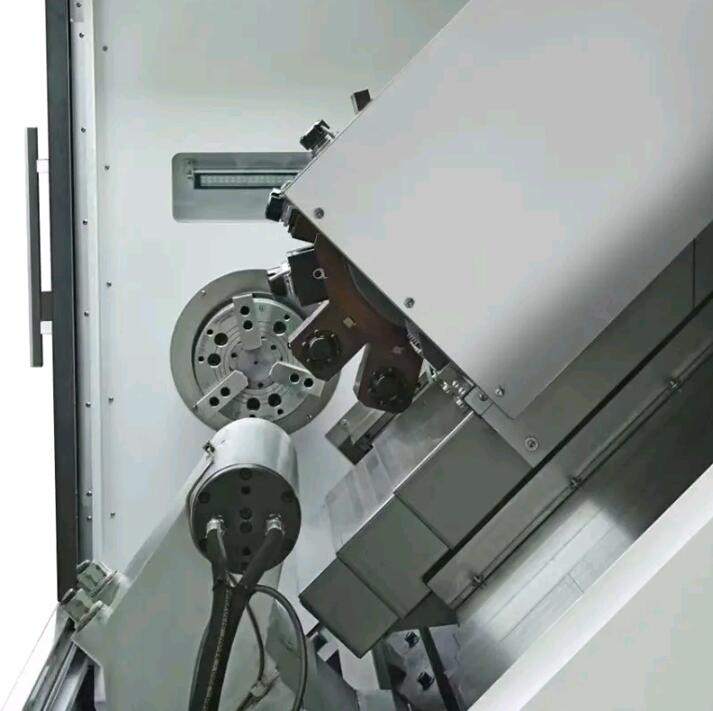The design of a slant bed horizontal CNC lathe reflects both functionality and efficiency, making it a widely applied machine tool in modern manufacturing. Its structure and features are carefully developed to support precision, stability, and ease of operation.
A defining element of this design is the slant bed structure. Unlike flat bed lathes, the slant bed positions the working surface at an angle, usually between 30 and 45 degrees. This arrangement improves chip removal, as gravity assists in clearing materials away from the cutting area, which in turn helps maintain machining accuracy and prolongs tool life.
Another important feature is rigidity and stability. The slant bed is typically made from cast iron or other strong materials to minimize vibration during operation. This robust construction ensures that the machine can handle continuous work while maintaining consistent results.
The design also incorporates ergonomics and operator convenience. With the slanted layout, tools and parts are more accessible, reducing operator fatigue and enhancing overall productivity. In addition, the arrangement provides better visibility of the machining process.
Tooling capacity is another aspect of consideration. Slant bed CNC lathes are often equipped with turrets that can hold multiple tools, enabling faster transitions between machining steps. This design supports efficient handling of complex parts with minimal manual intervention.
Finally, the design includes automation compatibility. Many slant bed CNC lathes are built to integrate with robotic systems or automated loading devices, further extending their role in high-volume production environments.

https://www.zjgycnc.com/product/slantbed-cnc-lathe/gy52100-slant-bed-horizontal-line-rail-cnc-lathe.html
Line Rail CNC lathes are integrally cast with 250 materials to ensure processing rigidity and machine tool integrity.
Independent spindles with stepless speed change, better smoothness, and suitable for different speed processing requirements of complex products.
The spindle is driven by a servo motor to ensure high torque output when the spindle is running at low speed. It also makes the spindle start and stop faster and the speed runs more smoothly.
